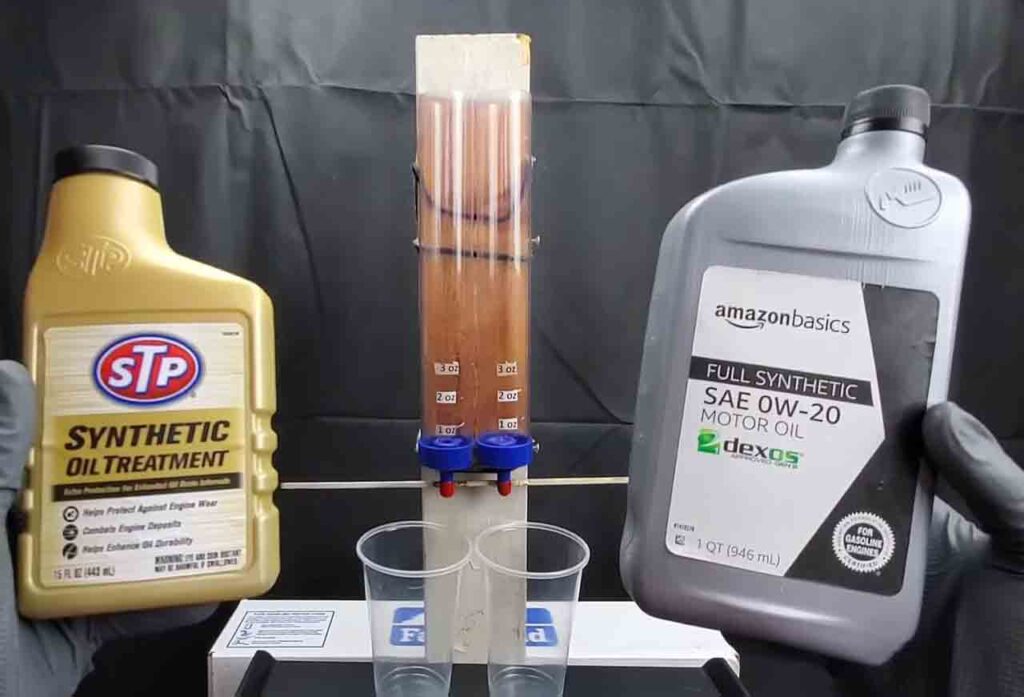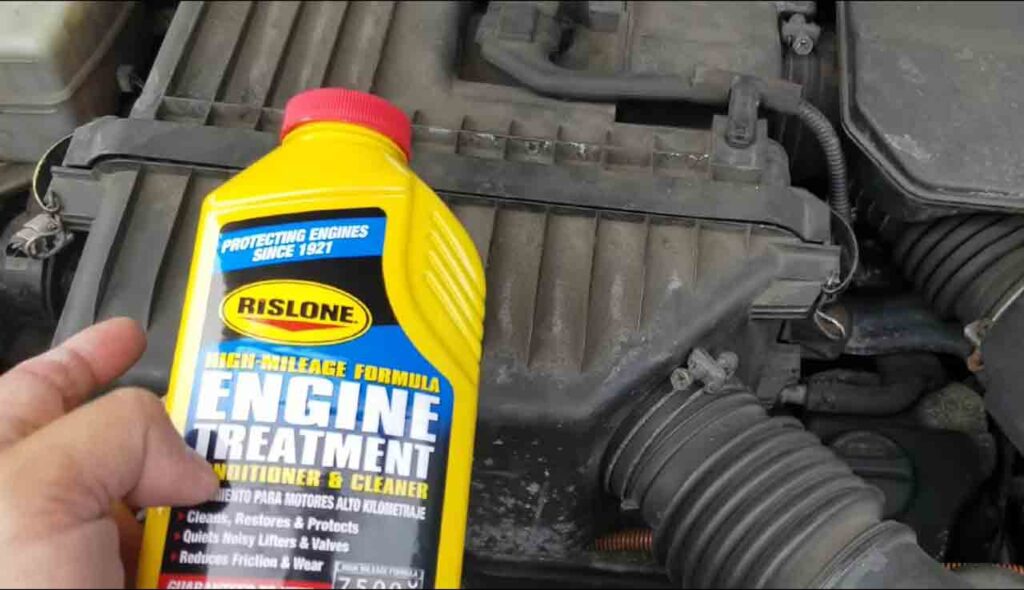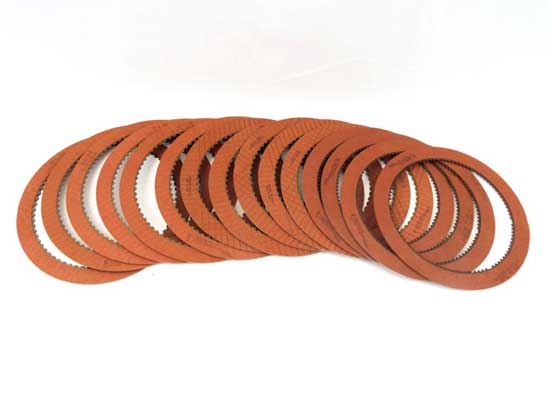7 Surprising Engine Oil Treatment Benefits

Engine oil treatments are additives designed to enhance the performance and longevity of your vehicle’s engine. But what are the engine oil treatment benefits?
Engine oil treatments can offer a range of potential benefits for your car’s engine, but it’s important to weigh the claims against the realities. Here’s a breakdown:
Engine Oil Treatment Benefits
Engine oil treatments, also known as oil additives, are products designed to enhance the longevity of a vehicle’s engine oil. Some potential benefits claimed by manufacturers and users include:

1. Friction Reduction
Engine oil treatments often contain friction modifiers that aim to reduce friction between moving engine parts. This can potentially lead to improved fuel efficiency and reduced wear on engine components.
2. Wear Protection
Certain additives claim to provide an additional layer of protection against wear and tear on engine parts. This may result in a longer lifespan for critical components such as the engine bearings, pistons, and camshafts.
3. Improved Lubrication
Some oil treatments include ingredients that claim to enhance the lubricating properties of the engine oil. This can potentially lead to smoother engine operation and reduced heat buildup.
4. Cleaning and Detergency
Engine oil treatments may include detergents and cleaning agents that claim to help remove sludge, deposits, and varnish from the engine. This can help maintain engine cleanliness and prevent the buildup of harmful deposits.
5. Seal Conditioning
Some additives claim to condition and rejuvenate engine seals, potentially reducing oil leaks and preventing premature seal failure.
6. Fuel Efficiency
By reducing friction and improving engine efficiency, some oil treatments claim to contribute to better fuel economy. However, the impact on fuel efficiency can vary depending on the specific product and engine conditions.
7. Reduced Engine Noise
Improved lubrication and reduced friction may result in quieter engine operation, reducing the overall noise level of the vehicle.
These specialized formulations claim to reduce friction, improve fuel efficiency, and protect against wear and tear.
While opinions on their efficacy may vary, some drivers find value in using these treatments to optimize their engine’s overall health.
Read More About Rear Differential Fluid: Types, Color, Changing Interval & More
Types of Engine Oil Treatments
Before diving in, understand that there are different types of engine oil treatments, each addressing specific concerns.
Common types include:
- Friction modifiers: Reduce friction between moving parts, improving fuel economy and engine smoothness.
- Seal conditioners: Revitalize aging seals to prevent leaks and oil consumption.
- Cleaner treatments: Remove sludge and deposits from the engine, improving oil flow and performance.
- High-mileage treatments: Formulate for older engines, reducing noise and leaks, and improving compression.

How To Use Engine Oil Treatment?
Here’s a general guide on how to use engine oil treatment:
Step1: Prepare Your Engine
Ensure that your engine is cool before adding any oil treatment. Park your vehicle on a level surface and wait for the engine to cool down.
Step 2: Locate the Oil Filler Cap
Open the hood of your vehicle and locate the oil filler cap. It is usually labeled “Oil” and may have a picture of an oil can on it.
Step 3: Check the Oil Level
Before adding the oil treatment, check the current oil level in your engine. If the oil level is low, it’s advisable to top it up with the appropriate type and grade of engine oil before adding the treatment.
Step 4: Pour in the Engine Oil Treatment
Remove the oil filler cap and pour the recommended amount of engine oil treatment into the engine. The amount may vary depending on the product, so refer to the product label for specific instructions.
Sep 5: Replace the Oil Filler Cap
Once you’ve added the engine oil treatment, securely replace the oil filler cap.
Step 6: Start the Engine
Start your engine and let it run for a few minutes. This will help distribute the oil treatment throughout the engine.
Step 7: Drive Normally
After adding the engine oil treatment, drive your vehicle as you normally would. This will allow the treatment to circulate through the engine components.
How Long Does It Take For Lucas Oil Stabilizer To Work?
Lucas Oil Stabilizer typically takes 10 to 15 minutes to circulate through the system and provide optimal lubrication.
Engine Oil Treatment Good Or Bad?
Whether engine oil treatment is good or bad depends on several factors, including your car’s age, condition, and driving habits, as well as the specific type of treatment you choose. Here’s a breakdown of the pros and cons to help you decide:

Pros
- Reduced wear and tear: Some treatments contain friction modifiers that can help reduce friction between moving parts, potentially leading to less wear and tear on your engine and extending its lifespan.
- Improved fuel economy: Again, certain friction modifiers can improve fuel efficiency by reducing friction loss.
- Quieter engine: Some treatments can reduce engine noise by lubricating and quieting worn-out components.
- Reduced leaks: Seal conditioners in some treatments can revitalize aging seals, potentially reducing oil leaks.
- Cleaning properties: Some treatments contain detergents that can help remove sludge and deposits from the engine, improving oil flow and performance.
Cons
- Ineffectiveness in certain cases: If your engine is in good condition and you use high-quality oil, you might not see any noticeable benefit from using a treatment.
- Negative interactions: Some treatments can interact negatively with other additives in your oil, potentially causing harm.
- Improper use: Adding the wrong type of treatment or using it incorrectly can harm your engine.
- Cost: Engine oil treatments can be an additional expense on top of regular oil changes.
- Unregulated additives: Engine oil additives are not as regulated as engine oils themselves, making it harder to be sure of their effectiveness and safety.
In conclusion
Engine oil treatments can be helpful in some cases, particularly for older engines or those experiencing specific problems. However, they are not a magic bullet and should not be used as a substitute for proper maintenance.
Choose reputable brands, read the product label carefully, and use the treatment only as directed. If you are unsure about whether or not to use an engine oil treatment, consult with a qualified mechanic.
Read Also Turbo Diesel Engines: Power, Precision, And Performance
How To Use Rislone Engine Treatment
- Locate the oil filler cap: This is usually on the top of the engine valve cover.
- Open the treatment bottle: Twist off the cap and remove the foil seal.
- Measure the right dosage: Refer to the instructions on the bottle for the correct amount based on your oil capacity. Typically, it’s one bottle for 4-6 quarts of oil. For larger engines, use one bottle per 5 quarts. For severely dirty engines, consider using two bottles and changing the oil after 100 miles.
- Pour the treatment slowly: Carefully pour the treatment directly into the crankcase through the open oil filler cap. Avoid spilling.
- Replace the oil filler cap: Secure the cap tightly.
- Start the engine: Let it run at idle for 5-10 minutes to allow the treatment to disperse throughout the oil system.
Rislone Engine Treatment Problems
While Rislone engine treatment can offer certain benefits in some cases, there are potential problems to be aware of:

1. Ineffectiveness
If your engine is in good condition and you use high-quality oil, you might not see any noticeable benefit from using Rislone.
2. Negative interactions
Rislone, like any engine oil additive, can potentially interact negatively with other additives in your oil. This can lead to sludge buildup, increased wear and tear, or even engine damage.
3. Improper use
Adding the wrong type of Rislone treatment or using it incorrectly can harm your engine. Overfilling your crankcase with treatment or using it too frequently can be detrimental.
4. Cost
Rislone engine treatment is an additional expense on top of regular oil changes. While the cost per bottle might seem reasonable, if used frequently, it can add up over time.
5. Unregulated additives
Engine oil additives like Rislone are not as regulated as engine oils themselves. This makes it harder to be absolutely sure of their effectiveness and safety.
6. Specific Rislone concerns
Some users report experiencing clogged oil filters after using Rislone. This can happen if the treatment dislodges significant sludge buildup, overwhelming the filter.
How To Use Oil Stabilizer
- Ensure the engine is cool.
- Identify the oil dipstick.
- Remove dipstick and pour recommended amount of stabilizer directly into the engine.
- Replace dipstick and secure it.
- Start the engine and let it run for a few minutes.
- Check oil levels.
- Monitor engine performance.
STP Oil Treatment How To Use
- Ensure the engine is cool and turned off.
- Shake the STP Oil Treatment bottle well before using.
- Add the recommended amount (check the product label or vehicle manual).
- Pour the treatment directly into the engine oil filler cap.
- Start the engine and let it run for a few minutes.
- Check the oil level and top up if necessary.
- Use regularly for optimal engine performance.
- Dispose of the empty container responsibly.
Can You Add Lucas Oil Stabilizer To Existing Oil?
Yes, Lucas Oil Stabilizer can be added to existing oil. It’s designed to safely blend with all types of oils.
How Long Does It Take For Rislone Engine Treatment To Work?
Rislone Engine Treatment is designed to start working immediately upon installation.
How To Use Abro Oil Treatment
Pour the can of ABRO Oil into the idling, warmed-up engine. Add ABRO with each oil change or when topping up between changes. For rebuilt engines, mix 50% engine oil with ABRO Oil Treatment to coat parts before assembly.
Honda Engine Oil Treatment How To Use
Here is how to:
- Run engine for 10 minutes and turn off.
- Shake Honda Engine Oil Treatment well.
- Pour entire content into the engine oil compartment.
- Don’t mix with other oil additives.
- Close and tighten oil cap.
- Run engine for another 10 minutes.
How To Use Lucas Engine Oil Treatment
- For regular engine maintenance: Add approximately 20% or one quart of Lucas Engine Oil Treatment to each gallon of plain motor oil (conventional or synthetic) during every oil change.
- For worn engines: Increase the ratio to up to 50% of the system capacity.
- For differentials: Mix up to 50% of Lucas Engine Oil Treatment.
How To Use Top 1 Engine Oil Treatment
- Warm up the engine before adding the treatment.
- Ensure the engine is turned off.
- Shake the Top 1 Engine Oil Treatment container well.
- For a 300ml can, add the entire contents to 3 liters of oil.
- For a 450ml bottle, add it to 4 or 5 liters of oil (10% treat rate).
- Use a funnel for easy pouring.
- Mix thoroughly by running the engine for a few minutes.
- Follow the recommended treat rate for optimal results.
Read Also The Significance Of The Role Of Viscosity Index Improvers
What Does Engine Oil Treatment Do
- Engine oil treatment is designed to enhance the performance of engine oil.
- Reduces friction and wear between moving engine parts.
- Improves lubrication efficiency, especially in high-stress conditions.
- Helps to extend the life of the engine by minimizing wear.
- Can enhance fuel efficiency by reducing friction.
- May contain additives that clean and protect the engine.
- Some formulations claim to reduce noise and vibration in the engine.
Is Engine Oil Treatment Necessary?
Engine oil treatments are generally not necessary for modern vehicles if you use high-quality, manufacturer-recommended oil.
How To Apply Engine Oil
Here’s a general guide on how to apply engine oil:
Step 1: Locate the Oil Drain Plug
Position the oil drain pan beneath the vehicle. Locate the oil drain plug on the bottom of the engine oil pan.
Step 2: Remove the Oil Drain Plug
Use a wrench to loosen and remove the oil drain plug.
Step 3: Remove the Old Oil Filter
Use an oil filter wrench to remove the old oil filter. Be prepared for some additional oil to drain when you remove the filter.
Step 4: Install the New Oil Filter
Screw on the new oil filter hand-tight. Do not use a wrench to overtighten it.
Step 5: Replace the Oil Drain Plug
Once the old oil has drained completely, replace the oil drain plug and tighten it securely.
Step 6: Add New Engine Oil
Use a funnel to pour the recommended amount and type of new engine oil into the oil fill cap.
Step 7: Check the Oil Level:
Start the engine and let it run for a few minutes. Check the oil level using the dipstick. Top off if necessary.
How To Use Oil Treatment For Car
To use an oil treatment for your car, start by checking your vehicle’s oil level. Add the recommended amount of oil treatment to the engine oil. Run the engine for a few minutes to allow the treatment to circulate.
FAQ
Do you use oil treatment before or after oil change?
Oil treatment is typically used before an oil change. It is added to the engine before draining the old oil to clean and condition the engine components.
Do engine oil treatments work?
The effectiveness of engine oil treatments is debated. Some believe they can improve lubrication and reduce friction, while others argue their benefits are limited or negligible.
How do you use complete engine treatment?
To use a complete engine treatment, typically pour the recommended amount into the engine oil and run the engine for the specified duration.
How much STP oil treatment should I use?
For 4-5 quarts of oil, it’s generally recommended to use one 15-ounce bottle of STP oil treatment.
Where do I add oil treatment?
You typically add oil treatment directly to the engine oil.
Can I put oil treatment in my car?
Yes, you can use an oil treatment in your car when necessary.
Is STP oil treatment safe?
STP oil treatment is generally considered safe for use in engines. It does not contain corrosive substances.
Are oil treatments good?
Oil treatments can be beneficial for hair and skin, providing moisture and nourishment. However, the effectiveness may vary, and it’s essential to choose the right oil for your needs.
What is the best engine treatment oil?
The effectiveness of engine oil treatments can vary based on individual preferences and specific engine conditions. Lucas Oil Stabilizer is popular for its viscosity and stabilizing properties.
How much oil additive should I use?
To determine the amount of oil additive needed, use 3-5% of the total oil volume. For example, if you have 5 liters of oil, add 150-250 milliliters of the additive.
How much engine oil treatment?
To determine the amount of engine oil treatment at a 10% treat rate, you would add 10% of the total volume of engine oil.
How many pumps of hair oil should I use?
Generally, start with 1-2 pumps and adjust as needed.

Conclusion
Engine oil treatments benefits are friction reduction, wear protection, and improved fuel efficiency. However, their effectiveness varies, and improper use can lead to negative outcomes. Consult with a qualified mechanic to determine if engine oil treatments are suitable for your vehicle.





